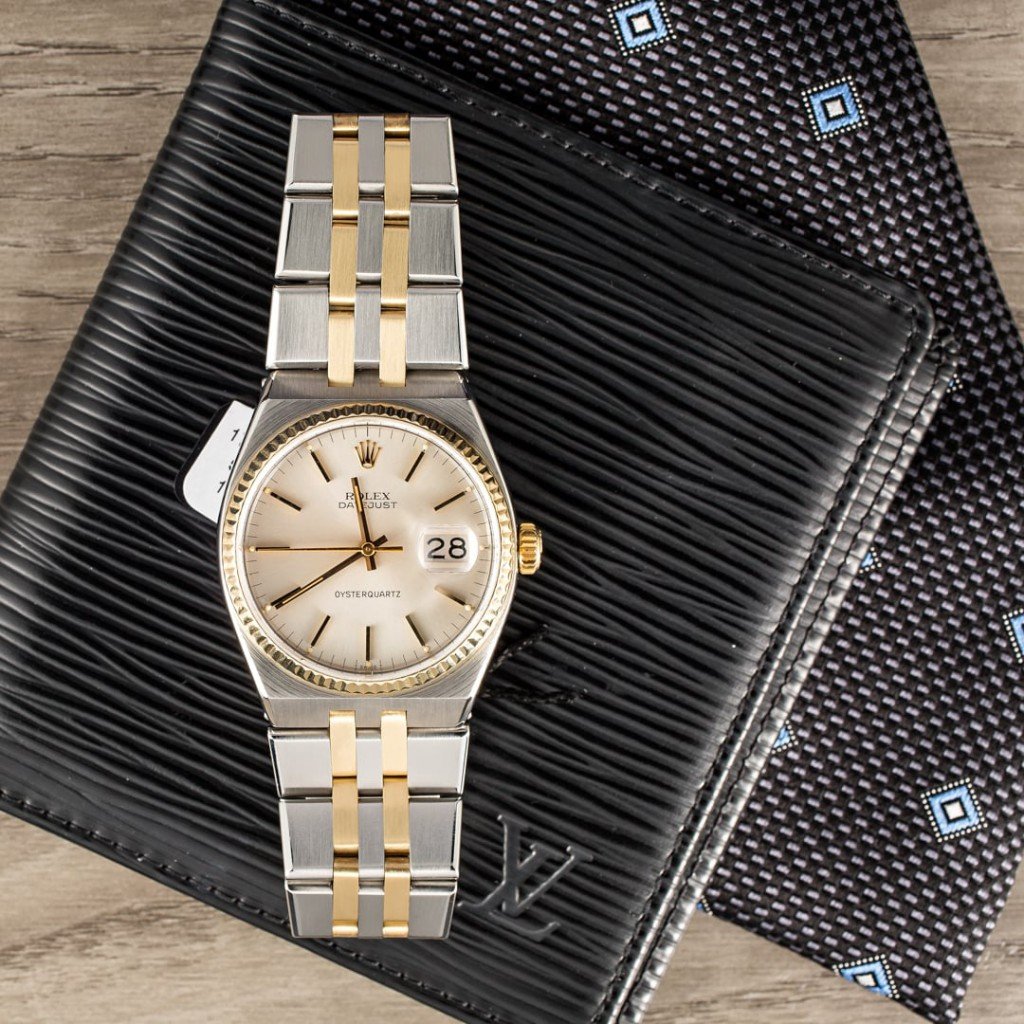
Rolex Oysterquartz Datejust 17013
Yes, even Rolex joined the quartz movement
Rolex may be known for their precise and reliable mechanical movements, yet there was a time when the Swiss watchmaking company got on board with the quartz craze during what is now referred to as the “quartz crisis” era.
In the early 1970s and 1980s, the trend in the watchmaking business was towards less expensive and more precise quartz calibers rather than more intricate mechanical movements. It was referred to as a crisis because it almost toppled the entire Swiss watchmaking industry with the majority of quartz watches coming out of Japan and the United States. Although there was widespread hesitation to join the quartz bandwagon among Swiss watch manufactures at the time, there were a few top watch brands, including Rolex that introduced their own quartz watches. Here we take a closer look at the development and evolution of the Rolex Oysterquartz.
1. The precursor to the Oysterquartz was the Rolex Date 5100
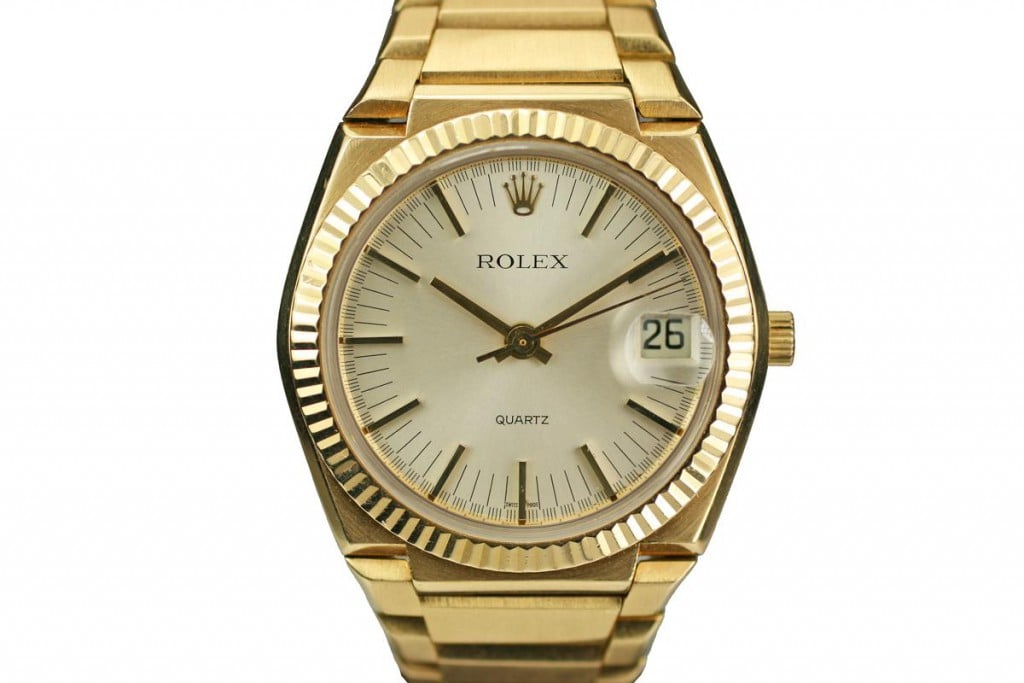
Rolex Date 1500 Quartz (Image: Rolex Encyclopedia)
The first Rolex quartz watch was the limited-series Date 5100 powered by the Beta 21 movement. The development of the Beta 21 was the result of the uniting of more than 20 Swiss watch brands, including Rolex, to form the Centre Electronique Horloger whose mission was to create electronic watch movements. The Beta 21 was used among numerous Swiss watch brands to equip their quartz watches.
Rolex only produced 1,000 pieces of the Date 5100 and it quickly sold out. Not only was the quartz movement a first for Rolex, but the design of the Date 5100 was also unique. Fashioned entirely from 18k yellow gold, the Date 5100 featured a distinct integrated case and bracelet that was considered very fashionable and modern during its era.
Despite the success of the Date 5100, Rolex did not believe that it was in their best interest to offer watches that were equipped with the same movements as so many other companies. Therefore, they ceased to be a part of the Centre Electronique Horloger and began the development of their own quartz movement.
2. It took five years to complete the Oysterquartz movement
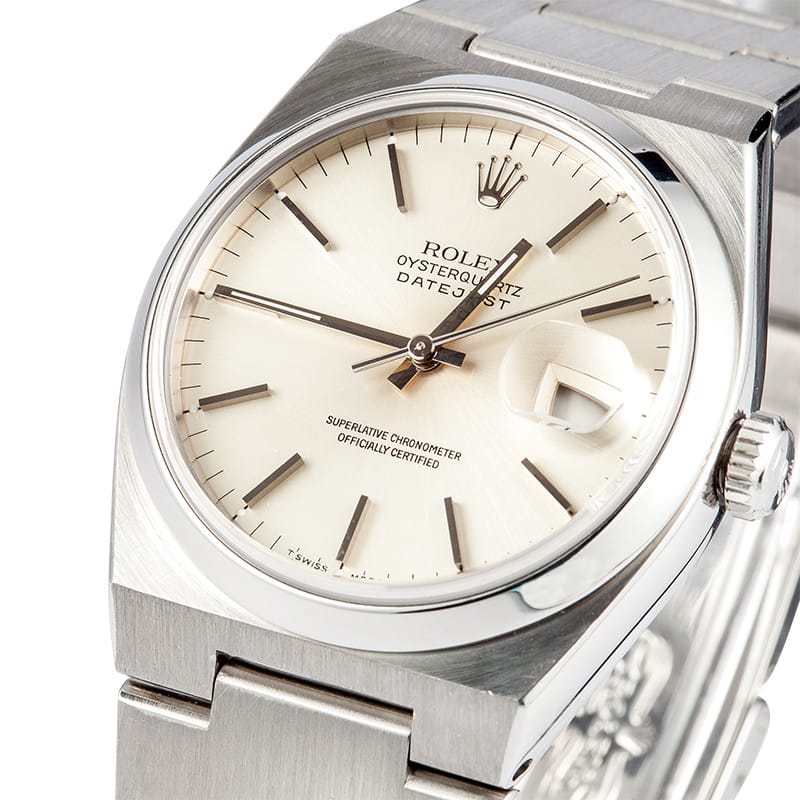
Rolex Oysterquartz Datejust 17000
Beginning in 1972, Rolex took five years to conceptualize, design, develop, and test their in-house quartz movement. In 1977 the brand introduced the 5035 quartz caliber for the Datejust and the 5055 quartz caliber for the Date-Date Oysterquartz models. The Rolex Oysterquartz movements included 11 jewels and a 32khz oscillator and the in-house calibers were hailed as modern marvels like nike jordan air technology when launched.
3. The Rolex Oysterquartz was in production for 25 years
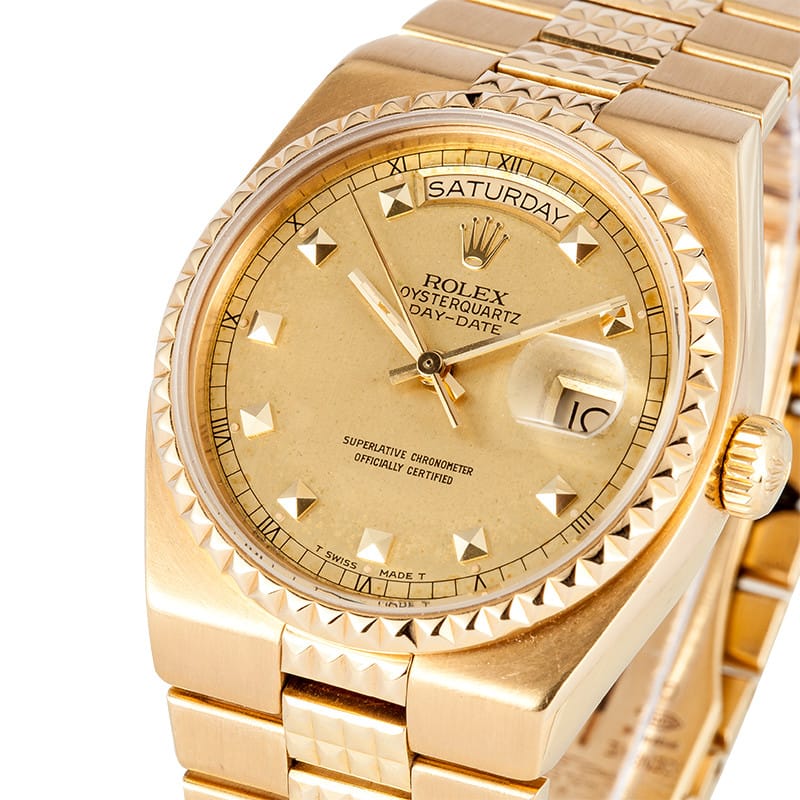
Rolex Oysterquartz Day-Date 19028 “Pyramid”
During its 25-year manufacturing run, the Rolex Oysterquartz movements were only ever used in the Datejust and Day-Date models. The Oysterquartz Datejust watches were offered in stainless steel (reference 17000), Rolesor stainless steel and yellow gold (reference 17013) and Rolesor stainless steel and white gold (reference 17014). Of course, the Day-Date President models were crafted full gold with an option of yellow gold (reference 19018) and white gold (reference 19019). Rolex also unveiled some special Oysterquartz versions with jewels and interesting design elements. Of particular interest, is this Day-Date Oysterquartz ref. 19028 with pyramid design details on the bezel, bracelet, and hour-markers.
4. Less than 25,000 Oysterquartz watches were ever produced
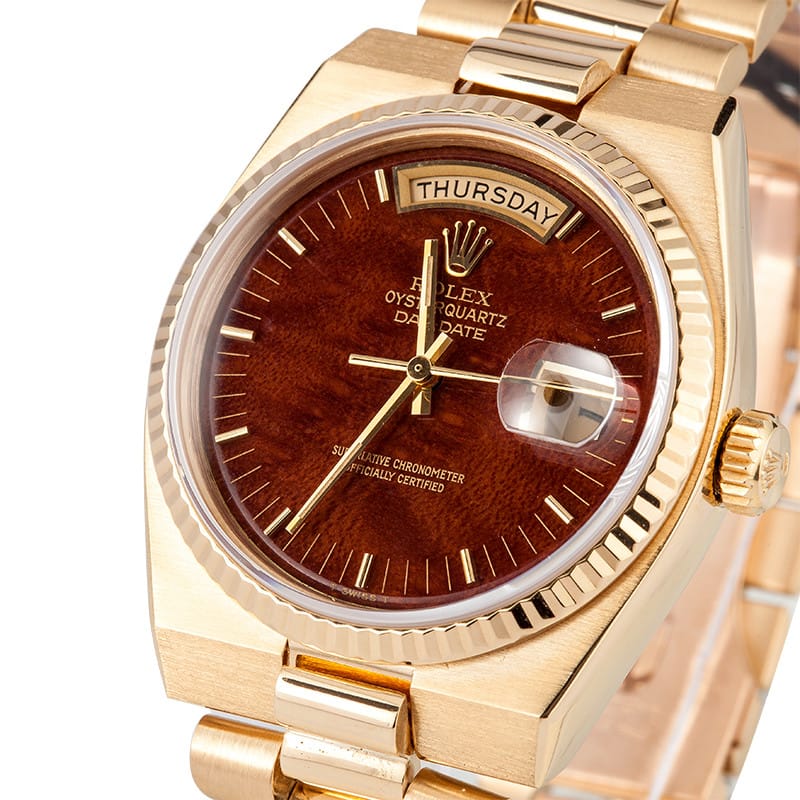
Rolex Oysterquartz Day-Date 19018
Although produced for 25 years, it’s estimated that fewer than 25,000 Oysterquartz models were ever created. In the realm of Rolex manufacturing, that is a low number, making the Oysterquartz an uncommon Rolex watch. 2001 was the final time that Rolex applied for certification from COSC for their quartz movements and certain Oysterquartz models remained in the brand’s catalog until 2003.
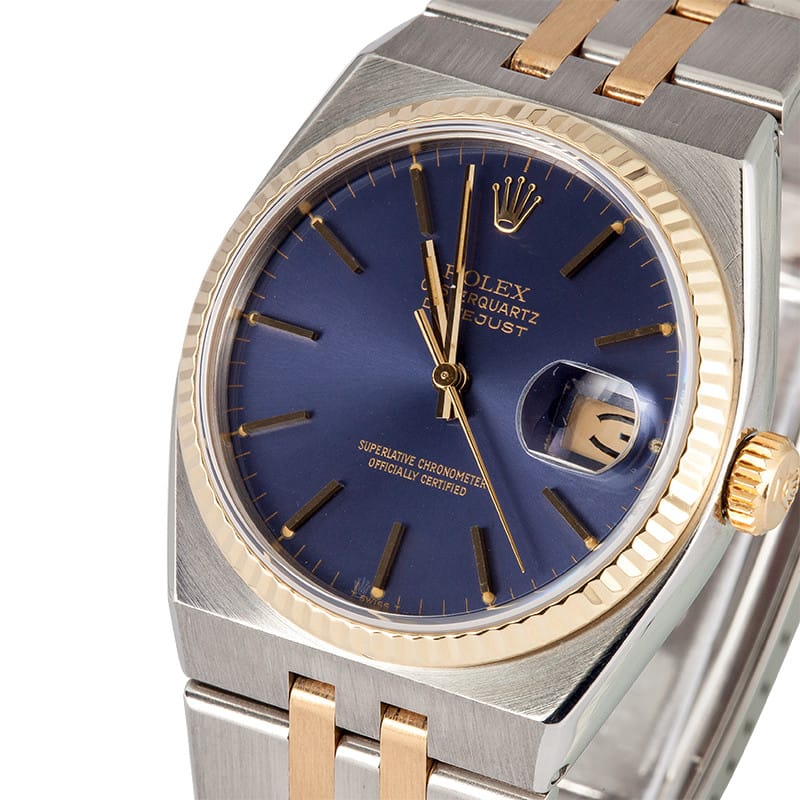
Rolex Oysterquartz Datejust 17013
The Rolex watches that are equipped with their mechanical movements may be more coveted and famous, however, the Oysterquartz represents a historically significant time during the brand’s history, as well as the Swiss luxury watch industry at large. It illustrates Rolex’s ability to not only keep up with the current watch trends but also shows how they take it and make it completely their own.